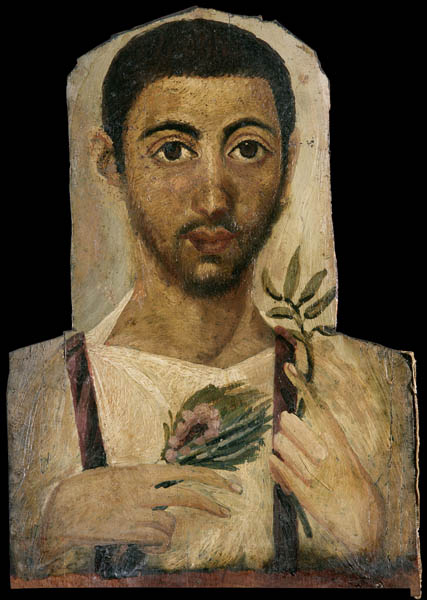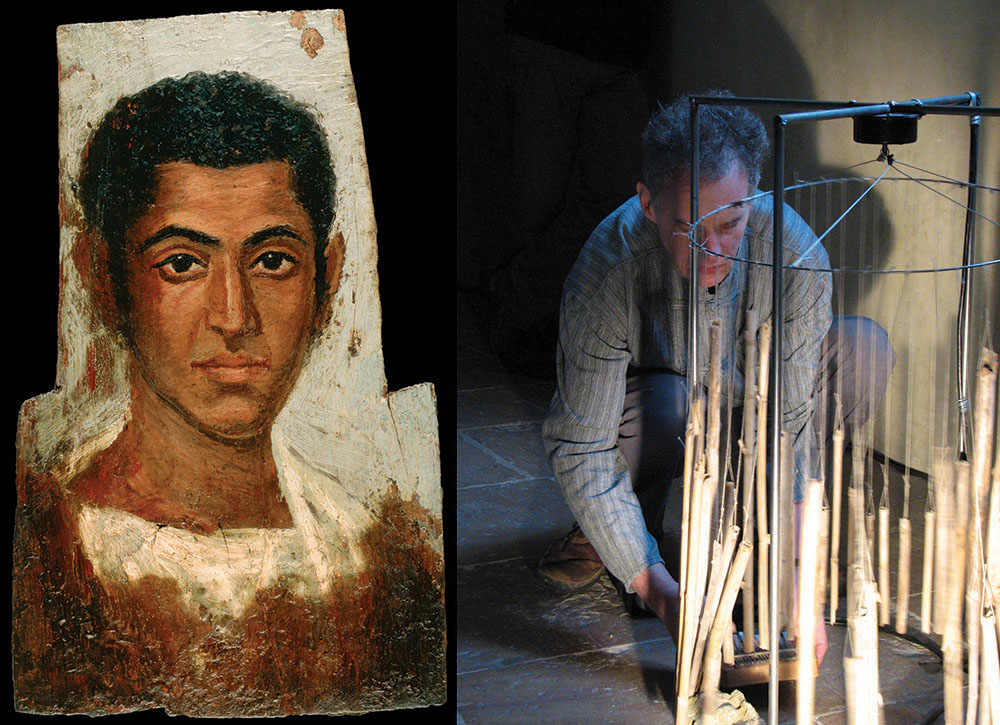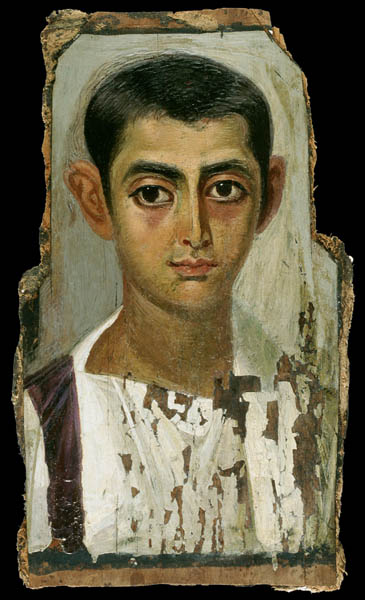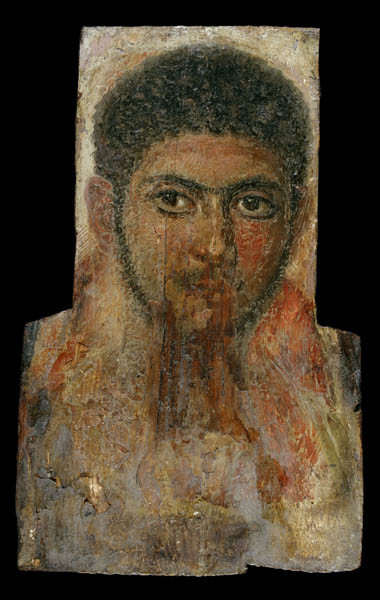
The
Musée des Beaux-Arts in Dijon is an unlikely context for my work.
It is a grandiose building with enormous high-ceilinged rooms, and creaky
floors. All is crammed full with classical art from many different periods,
visually dense and culturally enormously loaded. But for someone working
with sound the biggest drawback is the pervasive drone of air-conditioning
arriving through grills in the floor that kills the detail in every
sonic frequency. It is far from the elemental contexts that I am more
often drawn to. Nevertheless, I found a series of pieces that inspired
me, seven Fayoum portraits in the Egyptology room on the second floor,
and a space that inspired me equally, the Cuisines Ducales on the ground
floor. Once we had blocked off the two air-conditioning grills, its
stone vaults and floor created a resonant space. Being November it soon
cooled down but that was a price I was happy to pay. My project was
to bring the Fayoum portraits and the Cuisines Ducales together with
my own works. I gave the following text to the public.
7
sounds for 7
These seven
portraits Ė no, letís make the imaginative leap straight away and call
them people Ė these people, these seven people, lay in the dark for
nearly two thousand years, close to the dry bones of their previous
lives. Then they rediscovered the miracle of light, only to find themselves
in the strangest of surroundings, a museum room in a land far from their
own being stared at by people they surely couldnít recognise and being
discussed in languages they donít understand....

Iím not
the first to say this, but somehow these personalities transcend their
representations. Thatís why I said make the leap. We see through the
portrait to the person. They seem like us. Ordinary people, they could
be our neighbours of today.

Probably
when alive they didnít even know each other. We donít know enough about
the provenance of each portrait to be sure. But to me, they seem not
so happy in their glass cases upstairs in the Egyptology room. So I
invite them down to the cuisines ducales. Perhaps they will
be more at ease surrounded by stone. Why do I think this? Is it because
it seems more tomb-like or because I imagine the food of the kitchen
feeding them too? I donít know. I project them side-by-side on to the
vaulted ceiling. Maybe this is their first meeting. Maybe itís a meeting
that wasnít possible or even wanted in their lifetimes. And yet I am
imagining and proposing a much more complicated meeting. First, we look
at them. They return our gaze. We look at them as individual people,
but we also look for patterns. How like or unlike the people we see
today are they? I decide to give them sounds, I break their silence,
because after all silence is only revered if we also know sound. So
I give them sound. I give seven sounds for seven people, but this is
symbolic, which is to say each of the seven can share the sounds, itís
not one per person. And the sounds Iíve chosen are sounds they would
recognise, timeless sounds that are made in our present but resonate
with human experiences from long ago. That is my particular mediation,
my attempt to coax the seven into a relationship with us here and now.

Then comes
a broader mediation. With my colleagues we relay the seven sounds back
upstairs to the portraits on wood, hopefully to enhance their lonely
lives. Only then do I dare let them encounter the other sounds of today,
the sounds that they wouldnít have heard in their own time. We add the
sounds of voices and of machines and mechanical musical instruments,
that is to say our recent past, then the sounds of digital transformation,
our present and future. Digital sounds which we are far from familiar
with ourselves, even though we call this the digital age. All this is
relayed back to the cuisines ducales as both a gift and a challenge
to the seven. And with this gift, we arrive at some sort of equality
with them, even though they have been dead for two thousand years, even
though we use them for our own purposes. We offer them a chance to look
at us now and to reflect on how like them or unlike them we might be.
Of course, we can only imagine their response, but if we trust our imagination
maybe we can allow the seven to grow and learn too, and perhaps we can
appreciate the tiny moment of time travel that this exchange has allowed.
Perhaps like that we can share with them.




Text
: Will Menter
Portraits fayoums : copyright Musée des Beaux-Arts, Dijon
Photos : Francis Jay
film
of 7 sounds for 7
installations,
performances, music
main menu